Next week we will do an activity or a test to see if you have understood the whole unit of Prehistory.
__________
(You can see the information about this in your book. Pages 116-119)
The Neolithic period in the Iberian Peninsula
Agriculture and livestock farming started in the Iberian Peninsula later than in the Fertile Crescent, around 5000 BC.
Cardium pottery ("cerámica cardial") is the most characteristic form of art of this this period. This name comes from Cardium edule, a species of cockle (a mollusc that we call berberecho in Spanish). The shells of Cardium were used for decorating pottery:
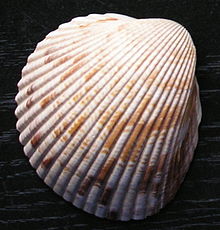 |
| Cardium edule shell |
 |
| The decoration of Cardium pottery was made with the edge of Cardium shells and with other sharp objects |
The Copper Age and megalithic monuments (c. 2500-2000 BC)
There were a lot of copper and tin deposits in the Iberian Peninsula. People from the East came searching for metals.
A characteristic form of pottery came with trade: the bell beaker ("vaso campaniforme"), a type of vase that existed in all Western Europe at the end of the Copper Age
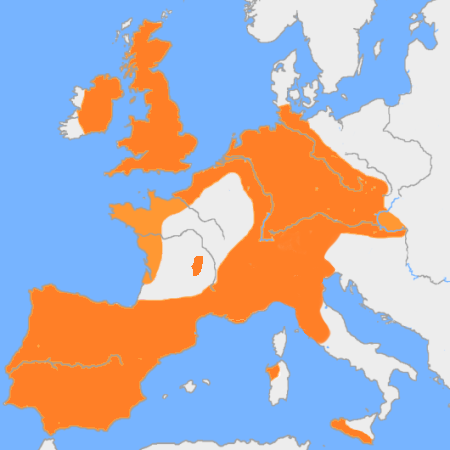 |
| Areas of Europe with bell beakers |
 |
| A bell beaker: a recipient with the shape of a bell |
The same people that made bell beakers made spectacular constructions called megalithic monuments or monuments made of gigantic stones. These monuments had a religious or magical meaning.
The most simple megalithic construction is just a large vertical stone: a menhir
A stone row ("alineamiento") is a series of menhirs forming a line.
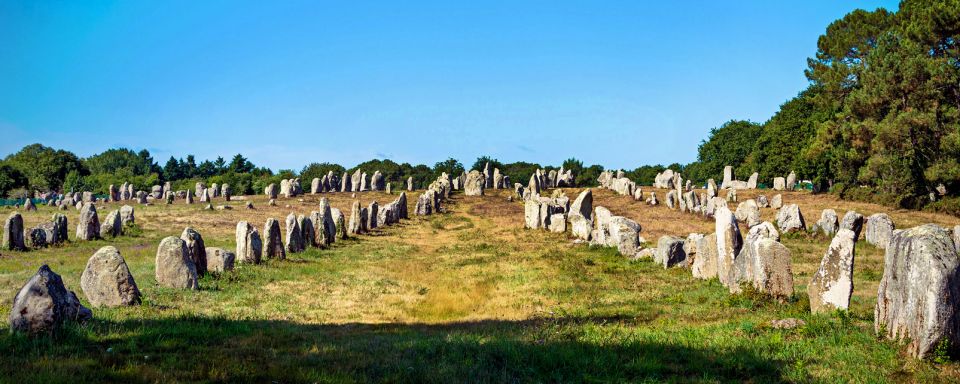 |
| Stone rows of Carnac, France |
A cromlech is a megalithic construction in circle. The most famous cromlech is Stonehenge, in England. The monument is oriented to the Sun on summer solstice: the monument has a religious meaning.
A dolmen is a megalithic construction made of vertical stones, situated as walls, and a large horizontal stone, in the shape of a roof. Originally, these constructions were covered with earth. They were tombs, for burying people.
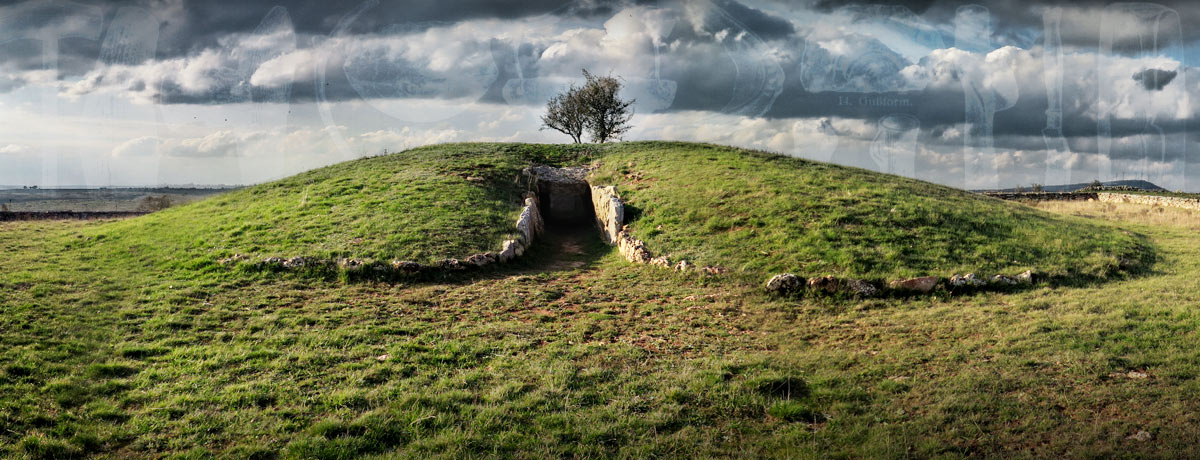 |
| This is how a dolmen originally looked like |
When the dolmen has an entrance covered with stones, it is called a corridor tomb.
 |
| A corridor tomb from inside |
There are a lot of megalithic constructions in the European Atlantic coast, from the west of the Iberian Peninsula to the Baltic Sea and from Southern Italy to the British Isles.
In the South-East of the Iberian Peninsula (Málaga, Almería), the culture of Los Millares produced dolmens and corridor tombs, called "cuevas" by local people: the most famous one is the Menga cave ("Cueva de Menga") (see page 119 of your book).
The Bronze Age in the Iberian Peninsula (c. 2000-1000 BC)
 |
| Bronze Age cultures in the Iberian Peninsula. Tin mines are very important for bronze. |
The most important remains from the Bronze Age in the Iberian Peninsula are the culture of El Argar, in South-East Spain, and the Talaiotic culture in Majorca and Minorca.
The Talaiotic culture is characterised by three types of characteristic stone buildings:
Taula (the name in Catalan means table, we do not know the purpose of this type of megalithic construction).
Talaiot (the Catalan name is related to the Spanish word "atalaya"): a defensive watchtower (a tower for watching the enemies).
Naveta (the name means that it has the shape of a ship, "nave", upside down): a collective tomb for burying a lot of people.
In the centre of the Iberian Peninsula, the culture of Cogotas I was the most important in the Bronze Age. The most important towns with walls ("castros") of this culture are located in the province of Ávila: Las Cogotas, Ulaca, La Mesa de Miranda.
 |
| Cogotas I pottery (Museo Arqueológico Nacional, Madrid) |
The most visible parts of Las Cogotas archaeological site today are from the Iron Age, though.
The Iron Age in the Iberian Peninsula (1st millennium BC)
Colonisers from the Eastern Mediterranean introduced iron in the Iberian Peninsula. They also introduced writing, so history starts with them: Phoenicians, Greeks and Carthaginians.
Tartessos was the most developed culture from the Iberian Peninsula, in the region of the Guadalquivir mouth.
Phoenicians and Greeks wrote legends about Tartessos. Some authors think that the name "Tarshish" in the Bible also means Tartessos.
| Tesoro del Carambolo, from the Tartessian civilisation (we do not know if the jewels were made by Tartessians or by Phoenicians) |
In the interior region, Iberian and Celtic peoples made defensive castros.
 |
| Defensive methods (Las Cogotas): walls and sharp stones on the ground in front |
 |
| "Verraco" from Las Cogotas in Ávila. This is the most typical element of the Iron Age Celtiberian cultures |





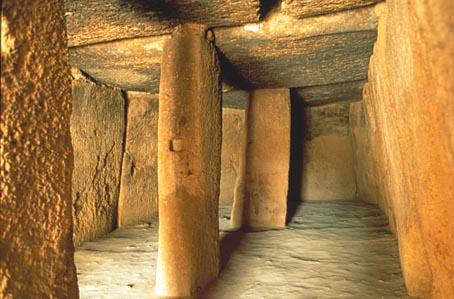


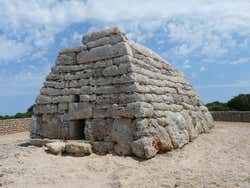

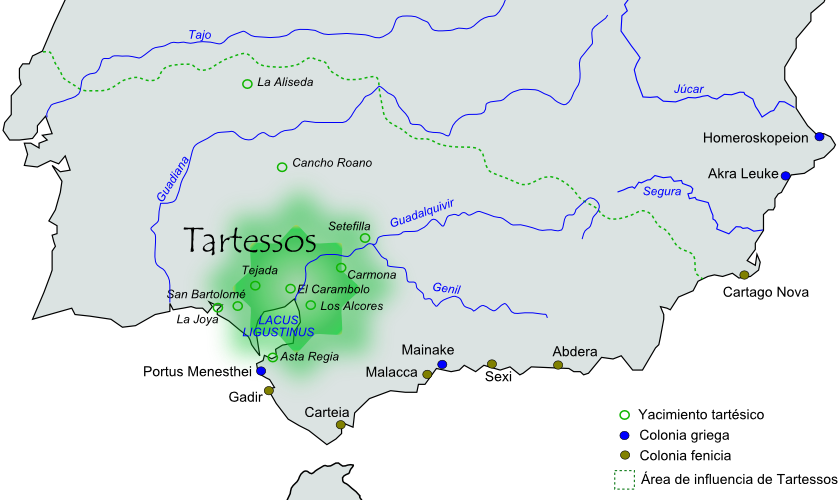
No comments:
Post a Comment
Note: only a member of this blog may post a comment.